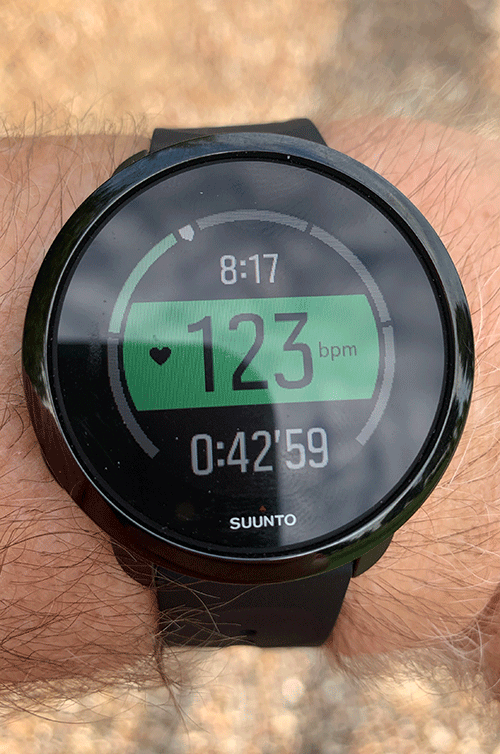 Today’s post is somewhat of a follow-up to a Question of the Day post back on 4 June about target heart rates; I talked back then about the critical differences between thinking about target maximal heart rates and target aerobic training heart rates.
Today’s post is somewhat of a follow-up to a Question of the Day post back on 4 June about target heart rates; I talked back then about the critical differences between thinking about target maximal heart rates and target aerobic training heart rates.
By the way, if you’re not as familiar with the concept of target aerobic training heart rates, spend a bit of time reading Dr. Phil Maffetone’s work on the topic – here’s a great introduction to the topic on his site. (I still think his 180 formula is sheer genius and a great starting place for just about any and everyone considering an aerobic training program.)
There are a host of great wearable trackers out there – that’s my own Suunto Fitness 3 from a recent walk above – including those from Garmin, Fitbit, and Suunto for example, as well as many of the big-tech watches/wearable devices (like an Apple watch).
As I’ve progressed in my own fitness, I’ve found the heart rate tracking feature particularly helpful to make sure I’m getting into my aerobic training zone during my get-the-day-started early walks, and later when doing my (more often than not) twice-weekly sprint workouts tracking heart rate recovery for pacing all-out sprint efforts.
Tangentially, on the advice of a mentor in the health, wellness, and fitness game, my wife and I have even been tracking the impacts of different foods on sleep quality and nighttime heart rates (here’s looking at you, dark chocolate squares after dinner) – some consistent and reproducible patterns appear to be evolving. I’ll be sharing more down the road…
At least from where I sit, for most of us, choosing a specific device isn’t the critical issue; your budget in fact, and your interest (and/or ability) to take a deep dive into a new tech device (some of which are impressively complicated), may be the more critical limiting factor.
Clearly some of us in the ancestral health and fitness world tend to be a bit compulsive about data tracking and can lose sight of the big picture behind the avalanche of data before us; take care to not venture too far on the data analytics limb.
A useful rule of thumb I offer clients, and used to offer patients is this: never pursue testing or data tracking unless you expect the findings to have a genuine impact on how your manage your day, diet, training, etc.
Tracking your training heart rate will have a meaningful impact on how you approach your fitness, and is a great place to start if you’ve not been harvesting any training related data at all.



Leave a Reply